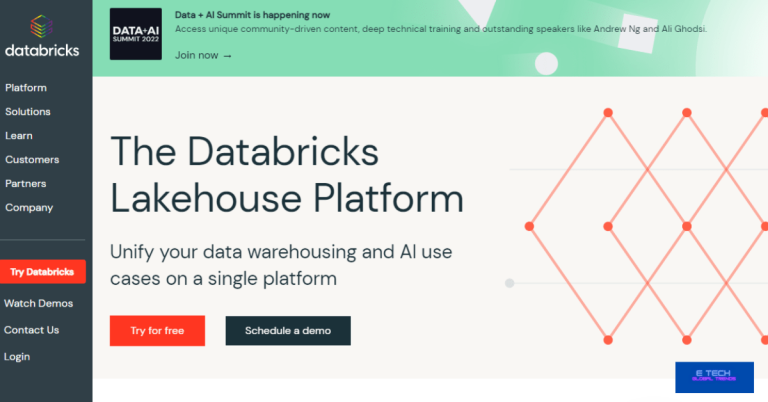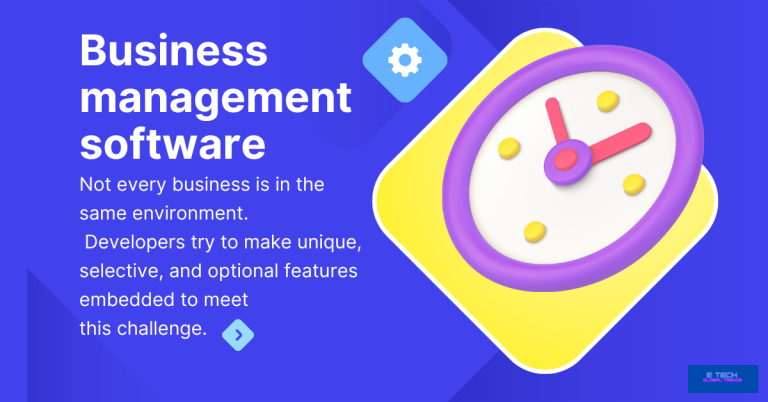Deep Learning
Machine learning, a subset of deep learning, is a component of AI. The term “deep” refers to using neural networks with multiple layers to represent intricate patterns in vast volumes of data. Although this tech does a good job of predicting short-term trends. It has trouble with long-term unpredictability and unforeseen occurrences. It has a strong sense of patterns but a shallow knowledge of causality.
Firstly, shall we clear the meanings of nearly the same tech words?
Describing the distinctions between deep learning, machine learning, and computer vision!
① Machine learning uses algorithms to create machine learning models. which are mathematical models that can recognize patterns in certain data that they train.
② In this tech, algorithms are replaced with linked neural networks, which are just machine learning.
③ Making your computers able to comprehend. Extracting information from pictures and videos as computer vision.
Mostly, this technology is used for this.
What is deep learning?
One kind of machine learning that can identify intricate patterns is called deep learning. which is based on neural networks. and they are modeled after the structure. operation of the human brain, and can also learn using unlabeled data.
As they come across additional data, their “self-learning” capability enables them to get better over time. Compared to conventional machine learning techniques, they may do more complicated jobs and attain more accuracy, particularly when working with big data sets.
A model for deep learning. Even if two identical digital photographs are different. AI may be able to identify commonalities between them. Chinese bone writing is being decoded using them, along with ancient Greek & Latin manuscripts.
With a design influenced by the human brain. It is utilized in fields like as speech recognition, picture recognition, and the creation of realistic text and visuals.
Although this way can train models using supervised learning. It differs from other forms of machine learning in that it can also learn from unsupervised sets.
Large volumes of data may process with these networks. which helps businesses solve issues. it learn more about their customers, and enhances their products.
What distinguishes standard machine learning from deep learning?
Artificial intelligence (AI) encompasses both deep learning and classical machine learning, although their methods, levels of complexity, and approaches to data handling are different.
1.0 The Architecture: Conventional Machine Learning.
include the use of methods such as linear regression, support vector machines (SVM), & decision trees.
These models are often simpler and need manually extracted features.
To extract pertinent elements from the data, they depend on human knowledge.
Deep Learning: uses “deep” neural networks, which are neural networks with multiple layers.
These networks eliminate the need for human feature extraction by automatically learning hierarchical characteristics from unprocessed input, including text or pictures.
2.0 Requirements for Data: Conventional Machine Learning,
- effectively uses fewer datasets.
- There is no need for large volumes of data for training. It works perfectly with hundreds to thousands of data points.
Deep Learning
- needs huge datasets to function at its best.
- With more data, these models perform better, which is why deep learning works so well in fields with large data sets, including image identification and natural language processing.
3.0 Engineering Features: Conventional Machine Learning.
preprocesses the data and selects the most pertinent attributes using domain expertise, which necessitates a large amount of human labor.
Deep Learning
automatically carries out feature extraction, which enables it to recognize and learn significant patterns straight from unprocessed input, such as words in a phrase or pixels in an image.
4.0 Processing Capacity- Conventional Machine Learning
Requires comparatively fewer processing resources than these models and may operate on standard PCs.
Deep Learning requires high processing power, frequently using GPUs & specialized hardware such as TPUs to manage the complex matrix computations required for training big neural networks.
5.0 Performance: Conventional Machine Learning
Functions well for easier jobs or issues with more organized data (such as tabular data).
Deep Learning: Performs remarkably well on challenging tasks like as natural language processing, audio recognition, and picture recognition.
For easier jobs, though, its performance could be excessive.
6.0 Interpretability: Conventional Machine Learning.
Decision trees & linear regression are examples of more interpretable models, which make it simpler to comprehend how they arrive at conclusions.
Deep Learning: Models frequently refers to as being “black boxes”. because, particularly with complex models such as deep neural networks. It may be challenging to comprehend how they operate inside and why particular choices are made.
In conclusion
While this technologyogy uses sophisticated neural networks to learn on its own from massive datasets, traditional machine learning uses simpler models and depends more on human experience for feature building. This approach frequently yields superior results for more complicated situations.
How can I learn about deep learning?
Machine learning algorithms include this. A deep neural network serves as its representation.
The name is divided into two parts. Explaining the network’s purpose is the learning. The network’s intricacy is described by the word “deep.”
There are 3 layers in a basic neural network:
- input,
- output, and
- One hidden layer.
There is one output layer, several hidden layers, and a single input layer in a deep neural network.
The output layer shows what the net is expected to predict based on a particular set of input data.
There are one or more “neurons” in each stratum. A neuron is, to put it simply, the result of an input variable and a random coefficient.
For the set of all coefficients (referred to as weights) to provide a forecast with a reasonable level of probability, earning is the process of changing these random coefficients into values is earning.
studying deep learning. Everything relies on your goals. Some individuals might be content to just learn an off-the-shelf app. Others want clarification on the question,
- “What is an activation function?” “Back propagation: what is it?”
- Are you a coder as well? Do you major in mathematics?
- Depending on their goals and background, each person must take a different route.
What are the Deep Learning Applications?
it has revolutionized a variety of sectors because of its adaptability and strength. Let’s examine a few of the most significant uses of deep learning that exist now.
1.0 NLP-Natural Language Processing;
It has reshaped NLP, making it possible for machines to comprehend and produce human language with previously unheard-of precision. Text creation, translation, and question-answering have advanced thanks to transformer models like GPT-4 and BERT. By analyzing and comprehending context, these models enhance chatbots, content creation tools, and machine translation.
2.0 Healthcare & Medical Diagnostics:
By facilitating more precise diagnosis and individualized treatments, this technology is revolutionizing the healthcare industry. These models are frequently more accurate than human radiologists in identifying anomalies like cancers in X-rays, MRIs, & CT scans in medical imaging. Additionally, this is being used in predictive analytics, drug development, and genomics to create patient-specific therapy regimens.
3.0 Computer Vision & Image Recognition:
The ability of deep learning models to identify and categorize objects in photographs was one of the field’s first notable achievements. Outstanding accuracy may attain with deep CNN (Convolutional Neural Networks) in tasks such as image categorization, object identification, and facial recognition. These days, social media filters and self-driving cars depend on real-time object identification for safe navigation. They are powered by these technologies.
4.0 Autonomous Vehicles:
it has played a significant role in the advancement of self-driving automobile technology. These models collect data from a variety of cameras and sensors that autonomous cars use to comprehend their environment, spot problems, and make judgments. Cars can safely “see” and traverse complicated settings through these models’ analysis of real-time data.
5.0 Finance along with Fraud Detection:
This is assisting the financial industry in automating trade, predicting market movements, and detecting fraud. Through the examination of transaction data patterns, these models can spot anomalous activity that could point to fraud. Financial organizations also utilize these models to forecast stock prices, assess investment risks, and give customers individualized financial advice.
6.0 Speech Recognition and Voice Assistants:
This has made great progress in speech recognition, allowing voice-activated virtual assistants such as Google Assistant, Apple Siri, and Amazon Alexa to communicate with users naturally.
- RNNs-Recurrent Neural Networks, along with
- LSTM- long Short-Term Memory network,s
are used by these systems to interpret and comprehend spoken language, enabling voice commands for scheduling, online searching, and smart device management.
This will likely be essential in fields like education, where it will be possible to create individualized learning experiences according to each student’s needs, and climate research, where models will be able to forecast extreme weather patterns. There are a lot of options, and this is certain to continue to lead AI development.
What recent developments have occurred in deep learning?
Recent years have seen tremendous progress here, resulting in AI systems that are more effective, adaptable, and potent.
What are the recent developments?
1.0 Processing Capacity.
Larger and more complicated deep learning models can train due to the availability of powerful hardware like the Nvidia GPU RTX5090 with 32GB VRAM and specialized AI processors like Google’s “Willow” chips.
The process of deep reinforcement learning,
Significant advancements can now see in this field, allowing agents to acquire complex decision-making techniques through error and trial in demanding conditions.
2.0 Combining AI with other technologies.
To capitalize on each method’s advantages and build more resilient systems, these models are combined with other AI technologies, such as symbolic AI.
3.0 Deep learning based on neuroscience.
To create more robust and biologically effective models, researchers in this field are investigating neural network designs that closely resemble the composition and operations of the human brain.
4.0 Deep learning combined with quantum computing.
The combination of this approach and quantum computing might potentially solve complicated issues at rates that are unthinkable for traditional computers. Problems investigated using quantum neural networks & algorithms to take advantage of the enormous processing capacity of quantum computers.
To discuss the hybrid model integration of quantum and classical computers, a professor from SMU- Singapore Management University worked to speak with NIST- National Institute of Science & Technology from the United States. Of course, the work is not simple.
5.0 XAI, or explainable AI:
Transparency and interpretability have become increasingly important as these models get more complicated. For users to trust and better control AI results, XAI seeks to make AI decision-making processes understandable to humans.
6.0 Edge AI:
Currently, it’s popular to run Edge AI models on personal devices, including smartphones and Internet of Things devices. This technique lowers latency and bandwidth consumption by analyzing information closer to the source, allowing real-time applications in wearable technology, such as smart watches that measure heartbeats and blood pressure, as well as Internet of Things sensors.
7.0 Self-Guided Education.
Models may learn using unlabeled data thanks to self-supervised learning, which is especially helpful when there is a shortage of labeled data. This technique has been very successful in image processing and speech recognition, which lessens the need for extensive annotated datasets.
8.0 Networks of Transformers.
NLP (Natural Language Processing) transformations use models like BERT and GPT 3, 3.5, and 4.0. which have resulted in significant advancements in tasks like text summarization, question answering, and machine translation.
Deep learning is reaching new heights thanks to these recent developments. opening the door to more complex and effective AI applications in a variety of fields.
The technology can undergo revolutionary breakthroughs in 2025 and beyond. propelled by growing applications across sectors, ethical issues. and technological developments. This is a thorough summary based on current events and professional forecasts.
Summary
It’s developing continuously. The future here depends on overcoming constraints (such as capacity and data reliance) and using advances in edge AI, multimodal models, and quantum computing.
Its appropriate adoption will be shaped by hybrid methodologies (such as neuro-symbolic AI) and ethical frameworks. Examine developments in GANs or agentic AI for further in-depth understanding.
Read more on related topics here. DeepGram AI, DeepSeek AI.







